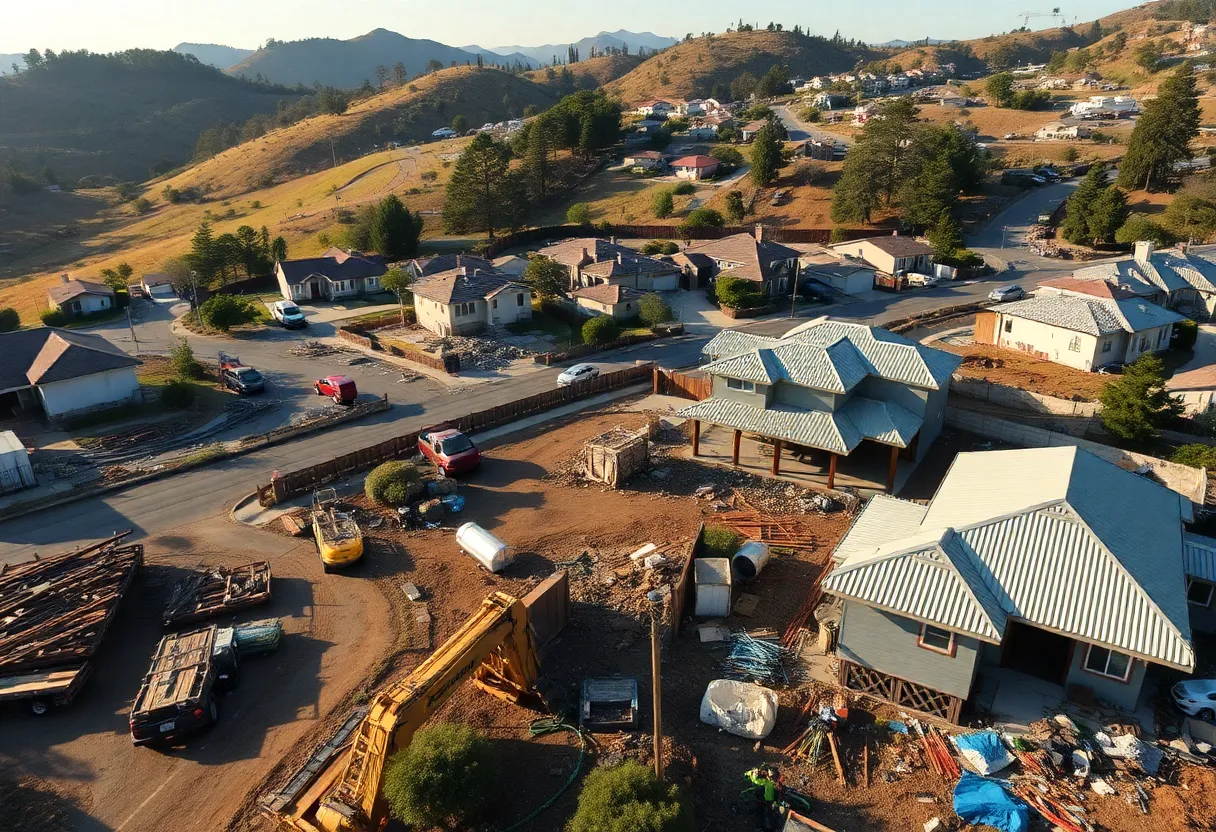News Summary
In the aftermath of devastating wildfires, over 800 homeowners in Pacific Palisades are seeking rebuilding permits. With city officials working to expedite the permitting process, many have begun construction on their homes. However, challenges remain, including a backlog of applications and concerns over affordable housing as nearly half of the lost properties were rentals. Local initiatives are underway to streamline recovery efforts and enhance community resilience against future disasters.
Over 800 Homeowners in Pacific Palisades Apply for Rebuilding Permits After January Wildfires
In the wake of the January wildfires that devastated parts of Pacific Palisades, Altadena, and surrounding areas, more than 800 homeowners have taken significant steps towards recovery by applying for rebuilding permits. The wildfires, which occurred on January 7 and 8, led to the displacement of nearly 13,000 households, intensifying the urgency around rebuilding efforts.
Permit Approvals and Trends
As of now, at least 145 homeowners have received approval to commence construction work on repairs or complete replacements of their homes. These approvals span across various affected locations including Los Angeles, Malibu, Pasadena, Altadena, and other unincorporated areas of Los Angeles County. Notably, by July 6, approximately 389 homeowners had applied for permits specifically in the Pacific Palisades, which accounts for about 8% of the estimated 4,700 residential properties damaged or destroyed in the wildfires.
Los Angeles County has also shown a promising rate of permit issuance, with permits granted for 15% of its 352 applications related to the fires. The city of Pasadena saw 20 property owners submit applications, with 2 successfully approved, while Malibu had 77 applications but no approvals at the time.
Challenges and Efforts to Streamline the Process
Some fire survivors have voiced frustrations over navigation issues related to red tape, including lost architectural plans and extended timelines for essential updates. Such delays exacerbate the anxiety faced by homeowners waiting for insurance payouts tied to their rebuilding permits. In response to these challenges, both city and county officials are implementing new measures to expedite the review process. This includes waiving certain fees and allowing self-certification for licensed architects for specific projects.
Rebuilding Progress and Future Plans
Many homeowners are already making progress on their rebuilding efforts. Individual cases like that of homeowner Alexis Le Guier, who managed to secure their permit in just 40 days thanks to new architectural plans, showcase the potential for streamlined processes. The city has also officially approved three permits explicitly for homes affected in Pacific Palisades.
Long-term recovery plans are also in the works, focusing on enhancing community resilience. Initiatives include clearing debris from schools and recreational centers while emphasizing the construction of fire-resistant structures. There is a vision to improve infrastructure further by burying power lines underground, which would mitigate risks associated with future wildfires.
Looking Ahead
Governor Gavin Newsom has underscored the importance of moving forward with a clear strategy in the rebuilding process. Reports indicate a 96% debris removal rate from fire-impacted sites, marking this as one of the fastest recovery efforts in modern history. As community infrastructure repairs remain a priority, local authorities are exploring advanced technologies such as AI to aid in rapid permit application corrections, creating paths towards a more efficient rebuilding process.
The path to recovery may still have hurdles ahead, but the community’s resilience, alongside government initiatives to expedite rebuilding, offers a glimmer of hope for homeowners striving to reclaim their lives after the devastation of the January wildfires.
Deeper Dive: News & Info About This Topic
Additional Resources
- Los Angeles Times: Rebuilding Permits in Los Angeles
- ABC7: Pacific Palisades Residents Rebuilding
- NBC Los Angeles: Sluggish Pace of Rebuilding Permits
- The Atlantic: After Fires, Neighborhoods Start to Rebuild
- Westside Current: Post-Fire Rebuilding Authority Concerns
Author: Construction CA News
The CALIFORNIA STAFF WRITER represents the experienced team at constructioncanews.com, your go-to source for actionable local news and information in California and beyond. Specializing in "news you can use," we cover essential topics like product reviews for personal and business needs, local business directories, politics, real estate trends, neighborhood insights, and state news affecting the area—with deep expertise drawn from years of dedicated reporting and strong community input, including local press releases and business updates. We deliver top reporting on high-value events such as the Rose Parade, Coachella, Comic-Con, and the California State Fair. Our coverage extends to key organizations like the California Building Industry Association and Associated General Contractors of California, plus leading businesses in technology and entertainment that power the local economy such as Apple and Alphabet. As part of the broader network, including constructionnynews.com, constructiontxnews.com, and constructionflnews.com, we provide comprehensive, credible insights into the dynamic landscape across multiple states.




